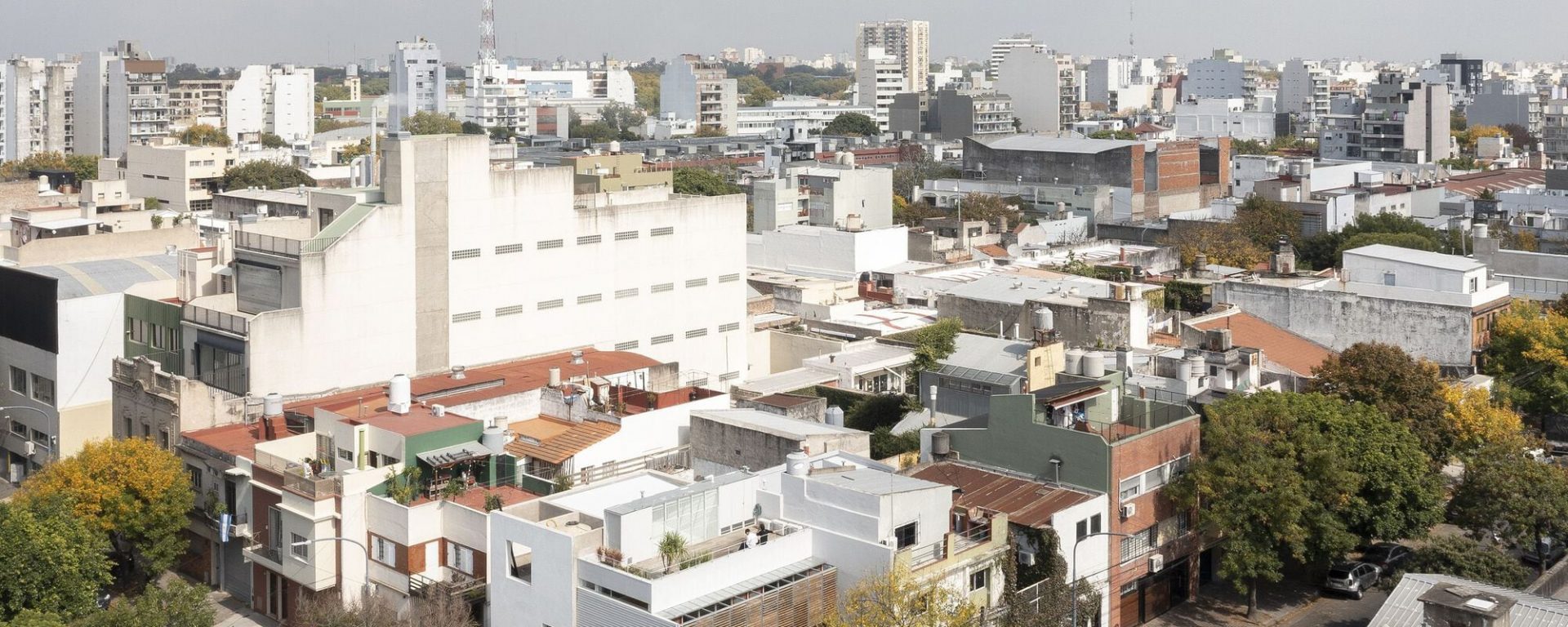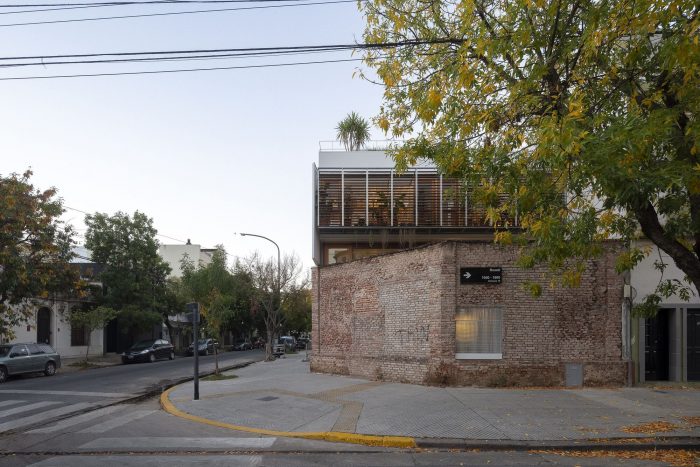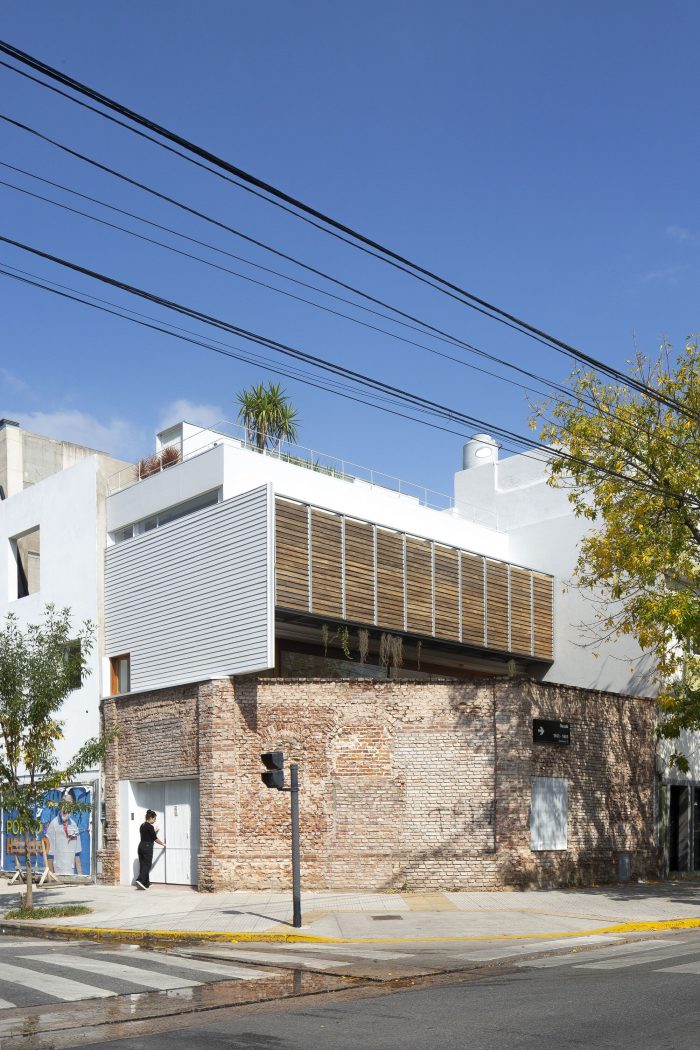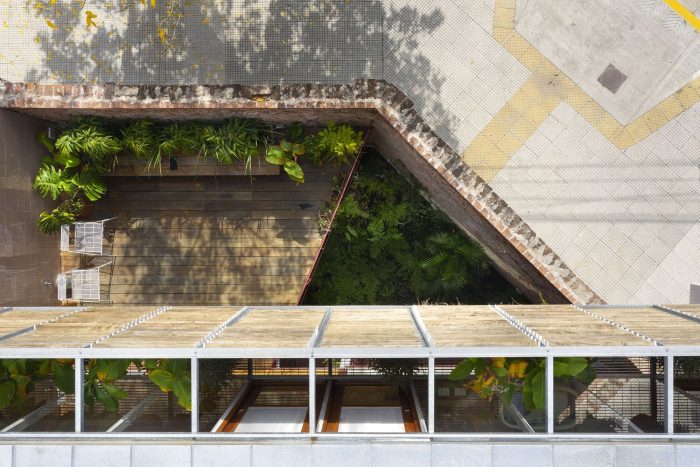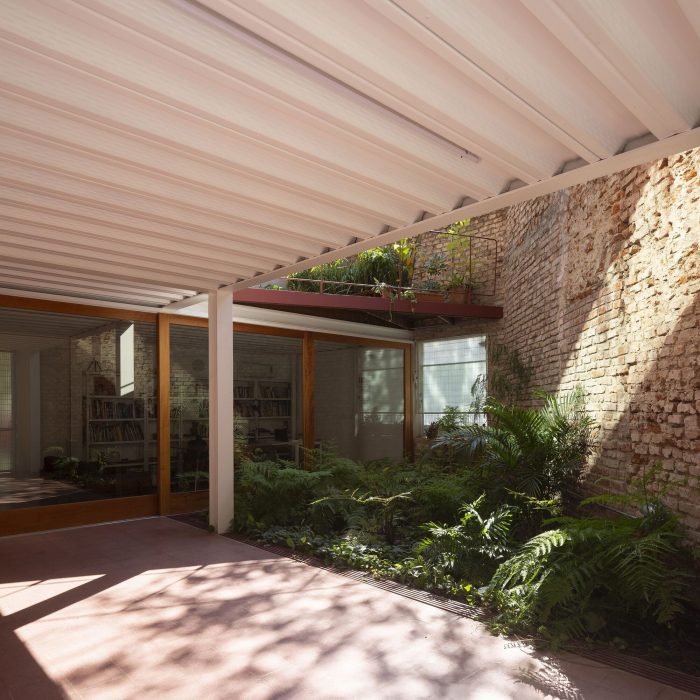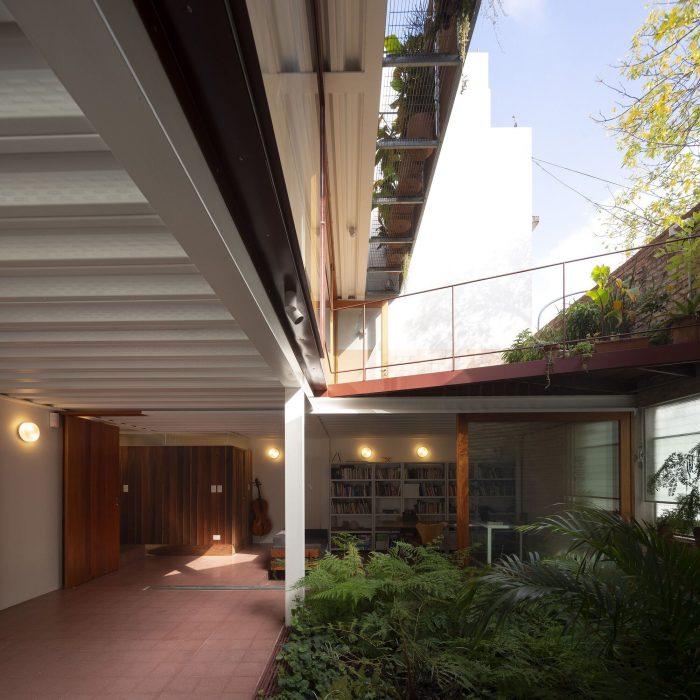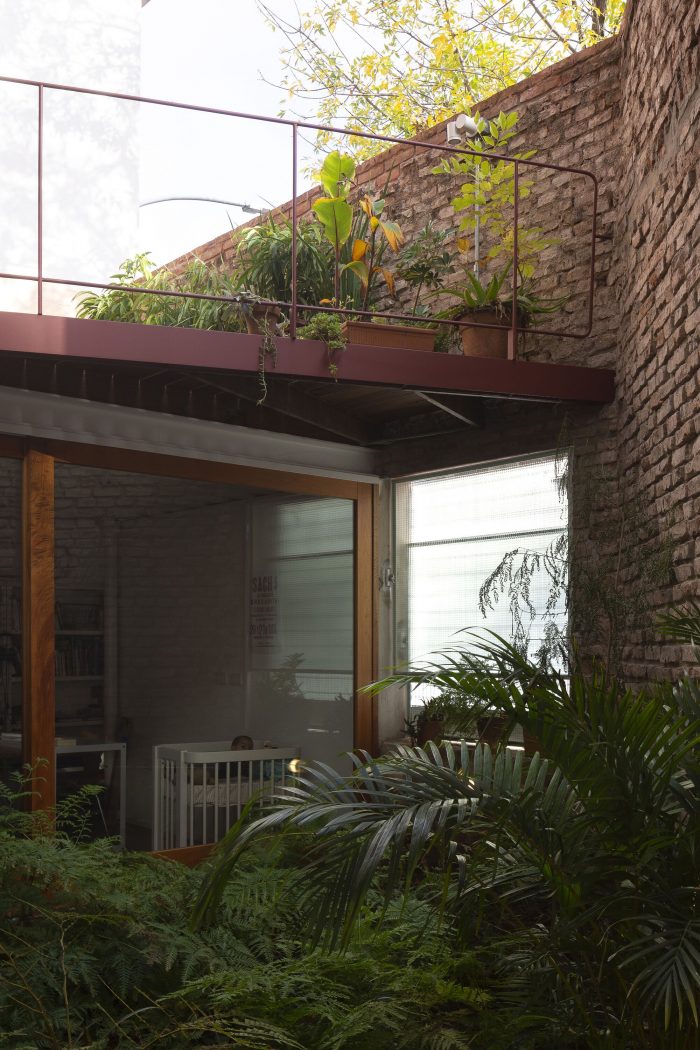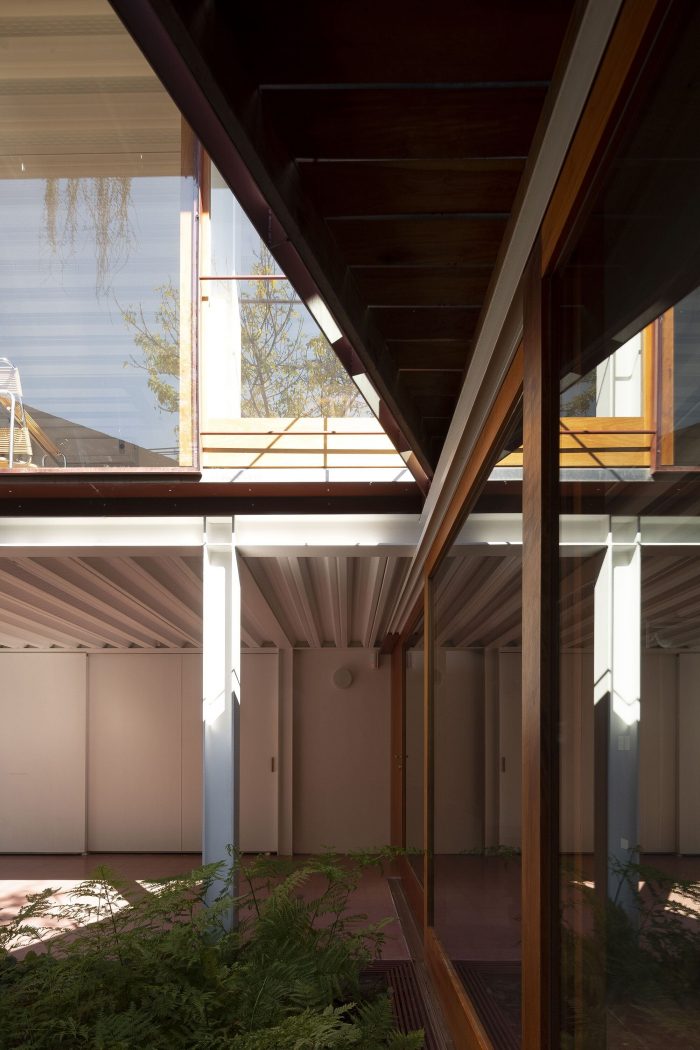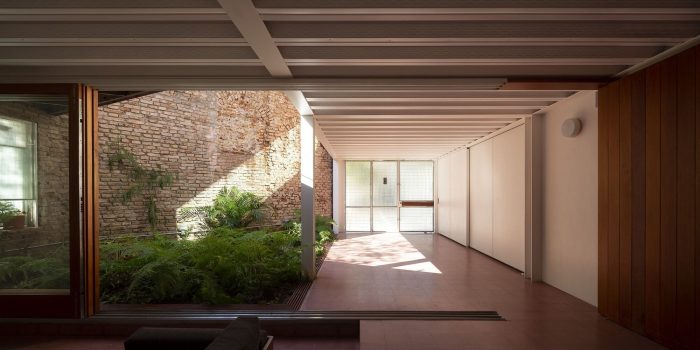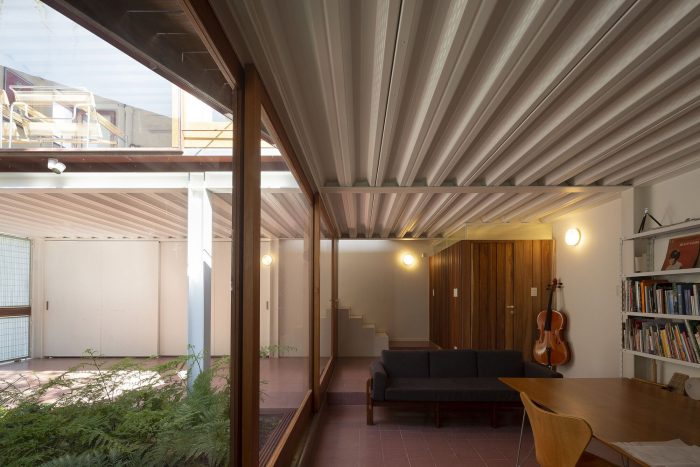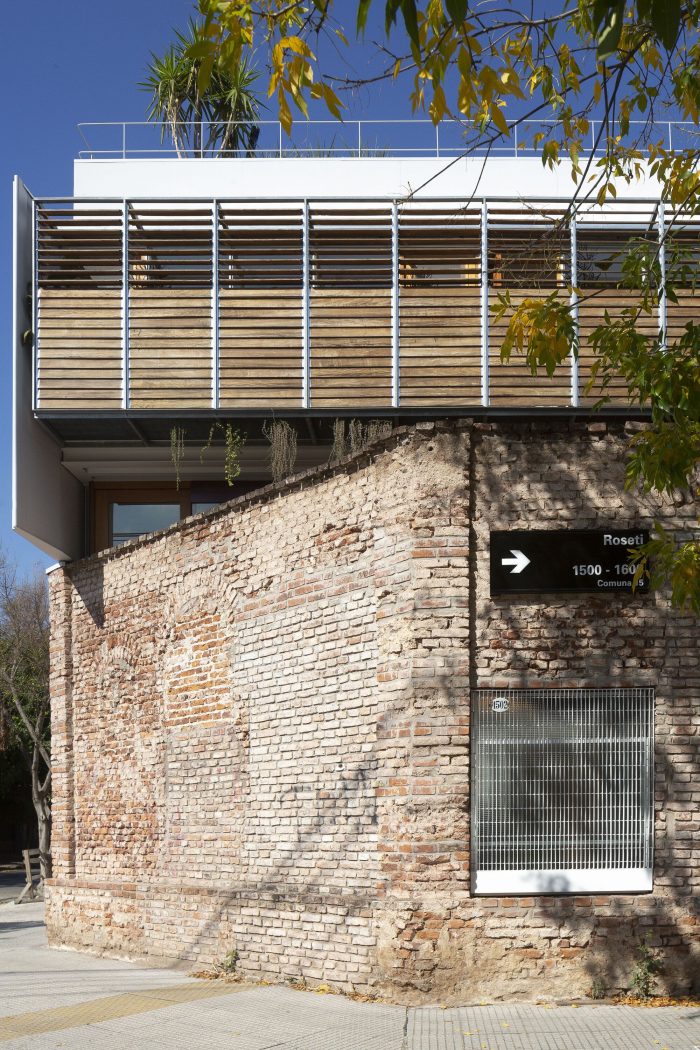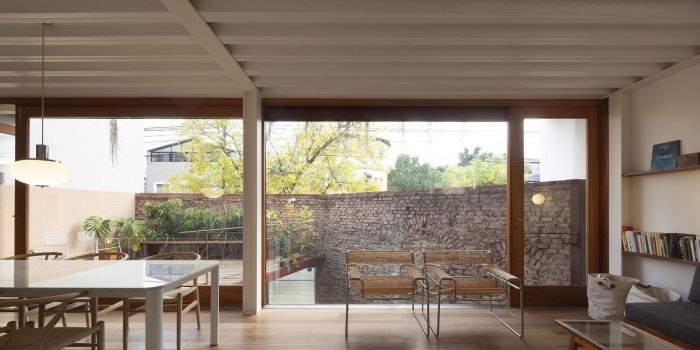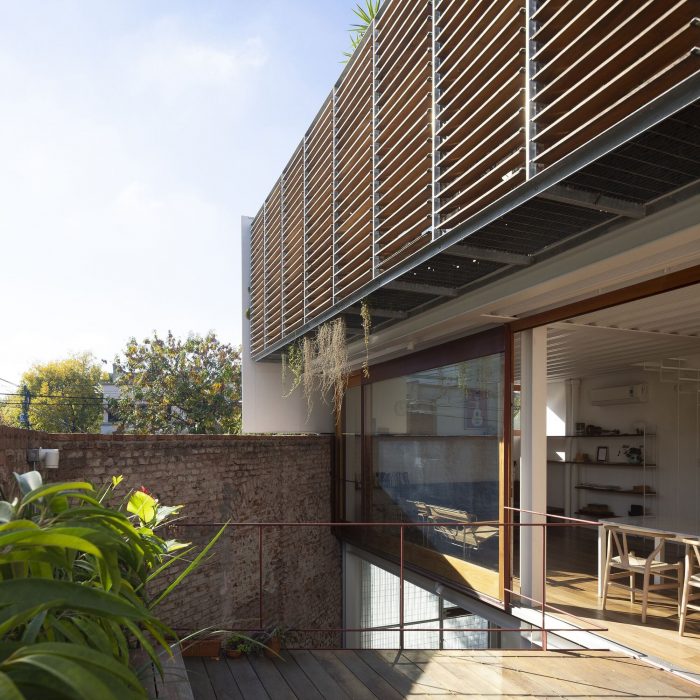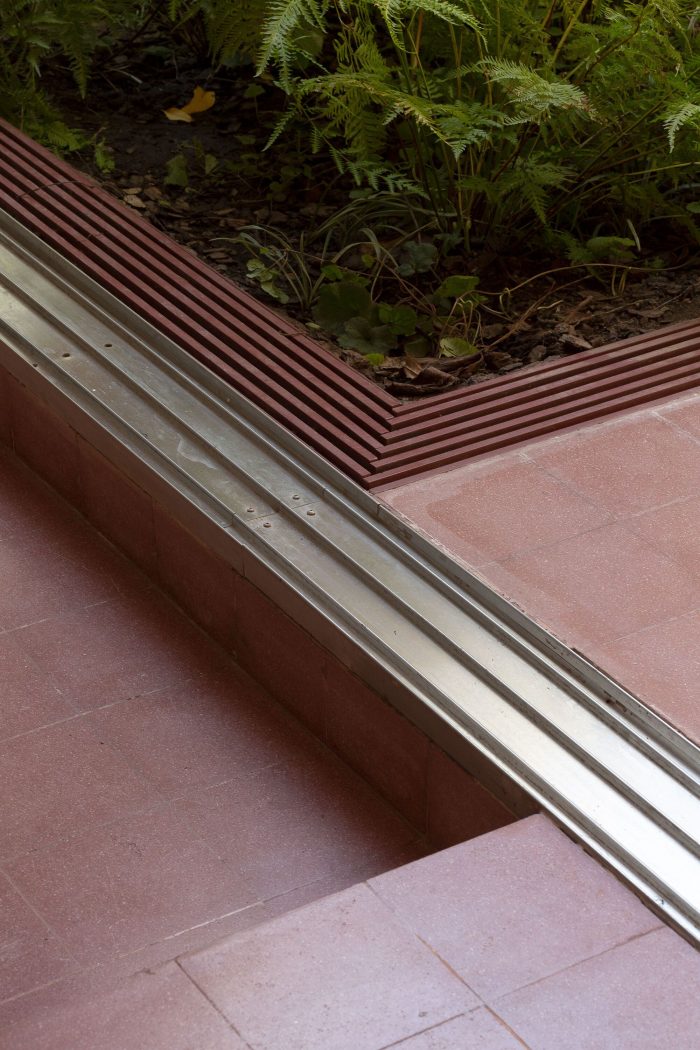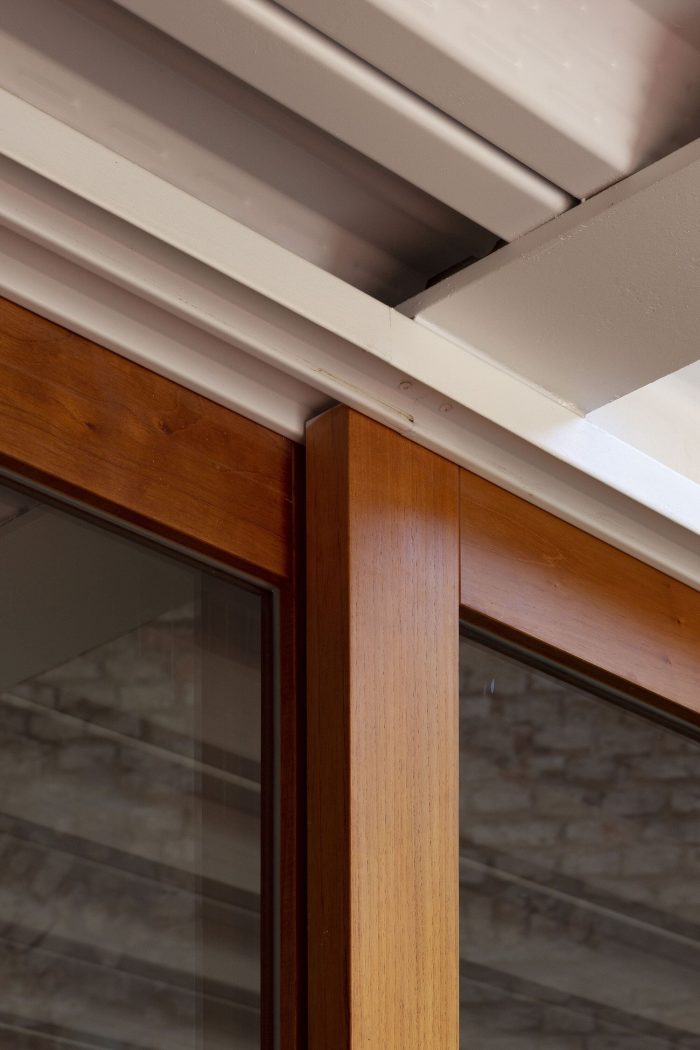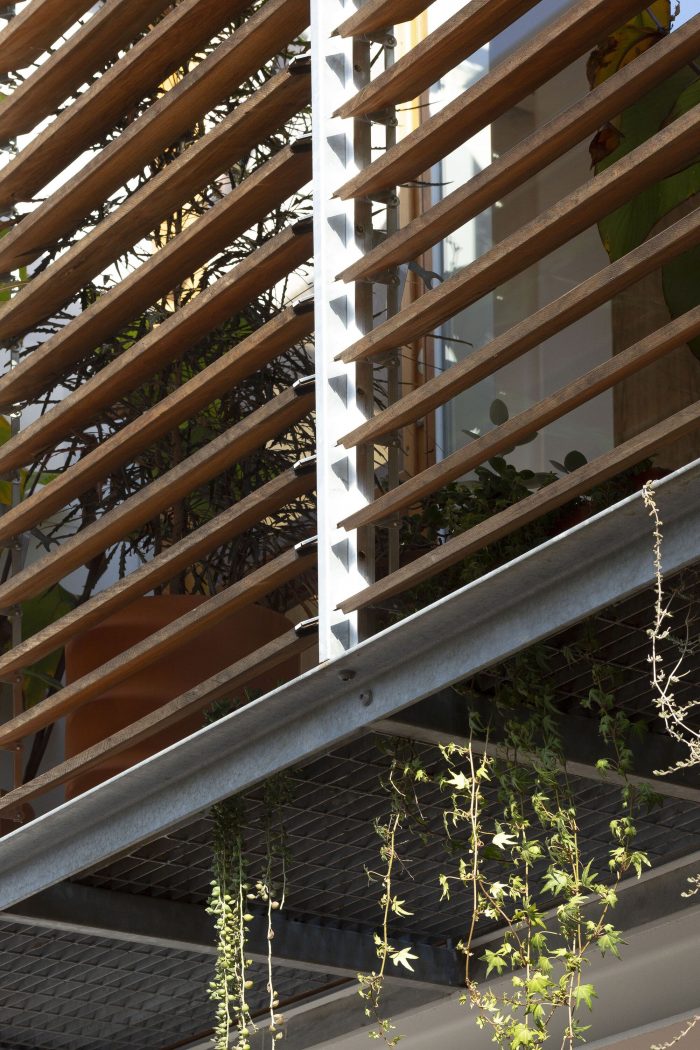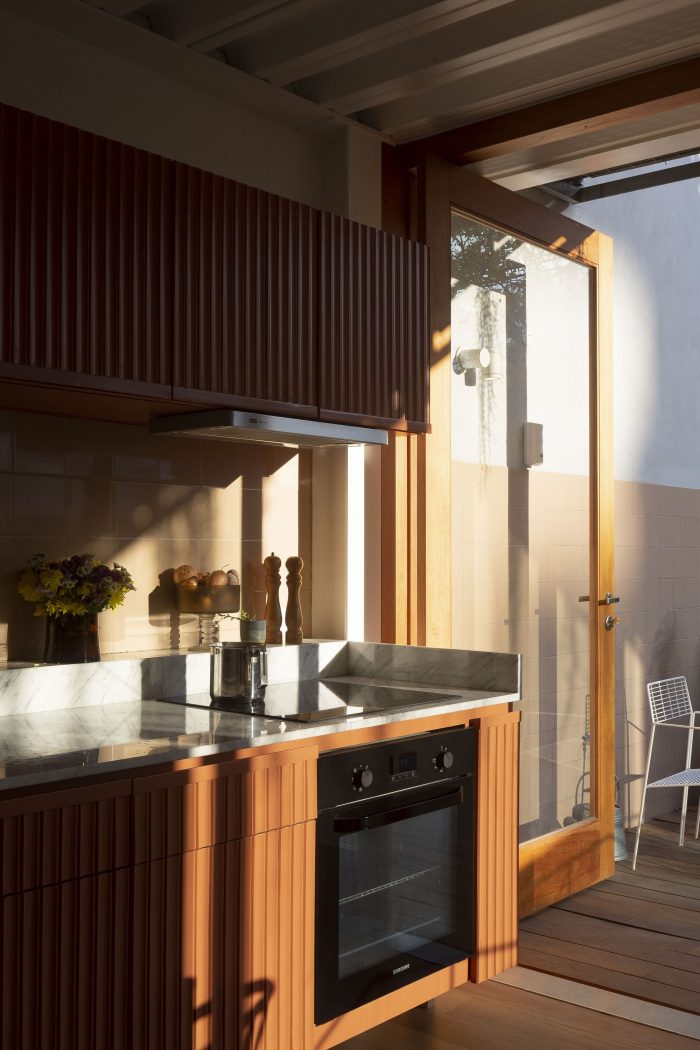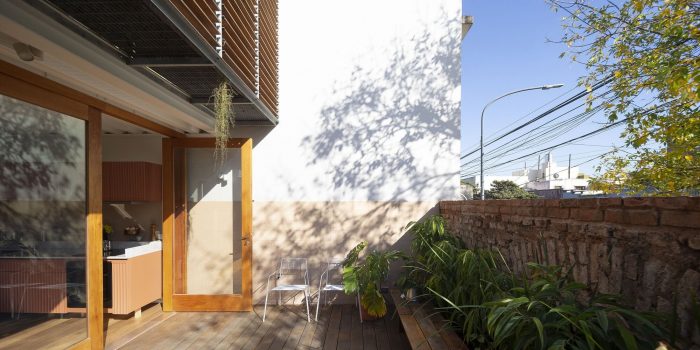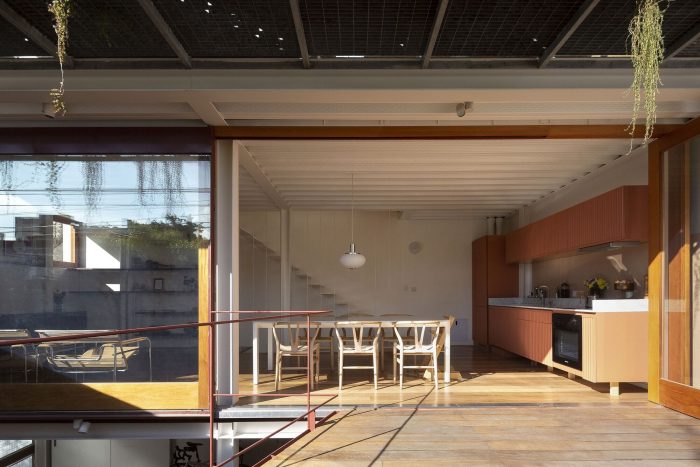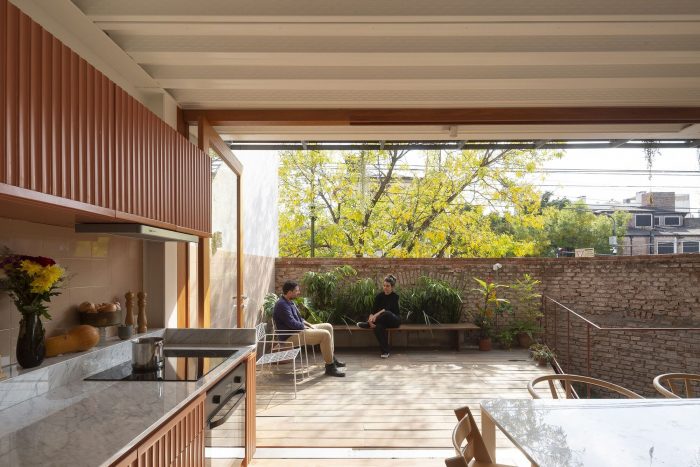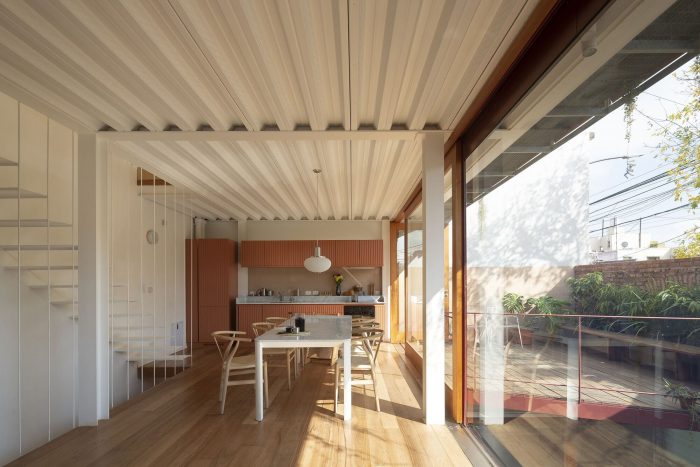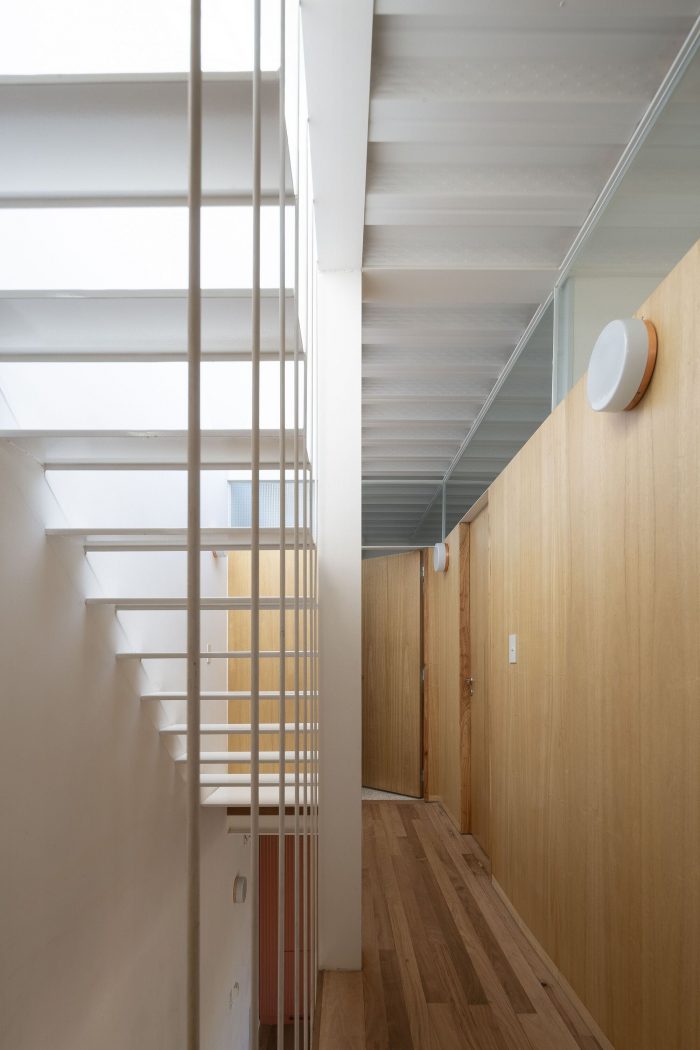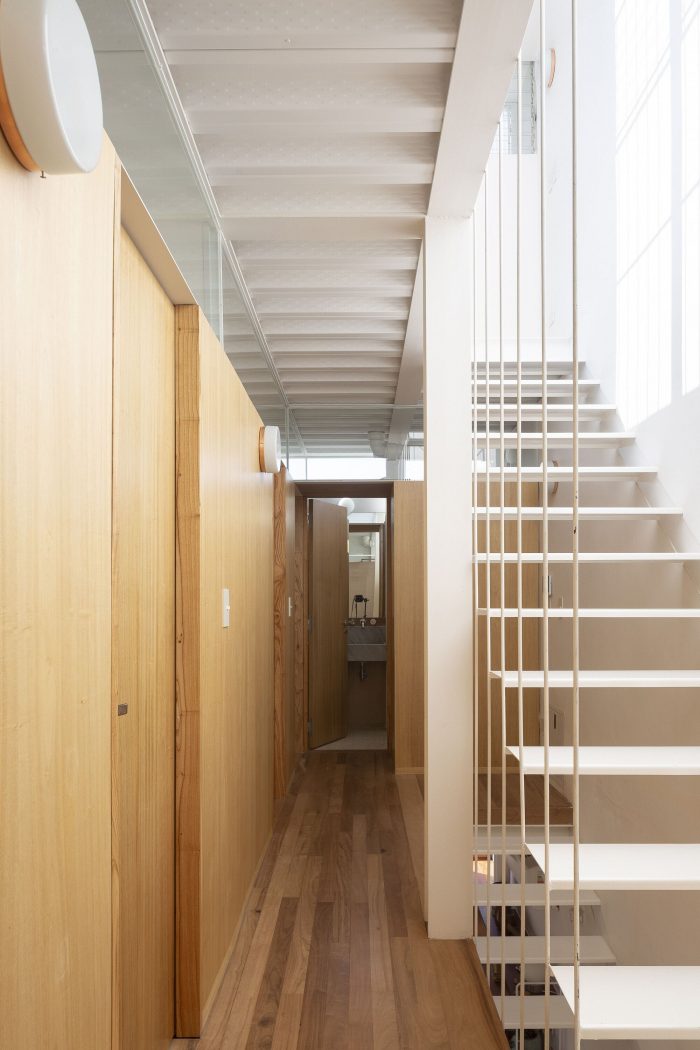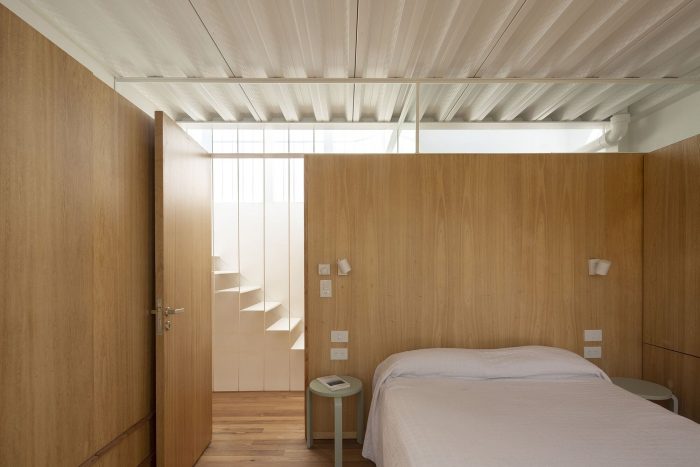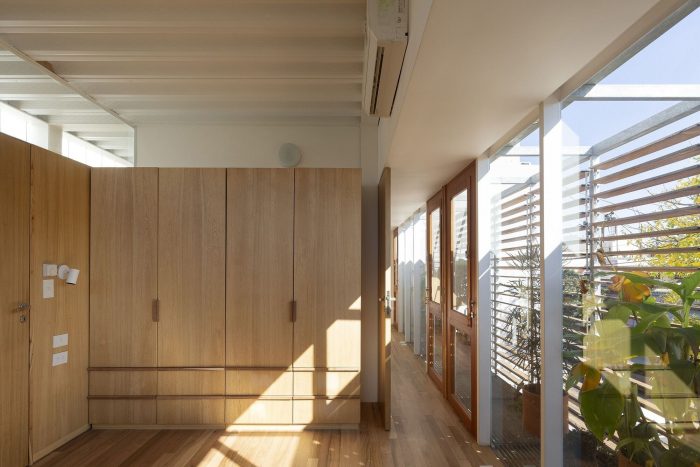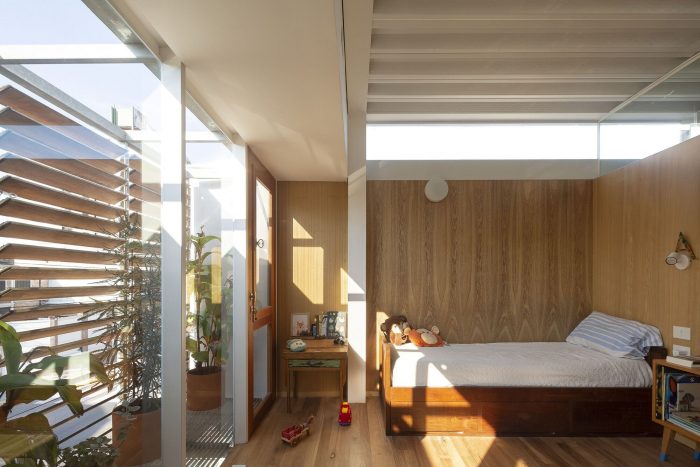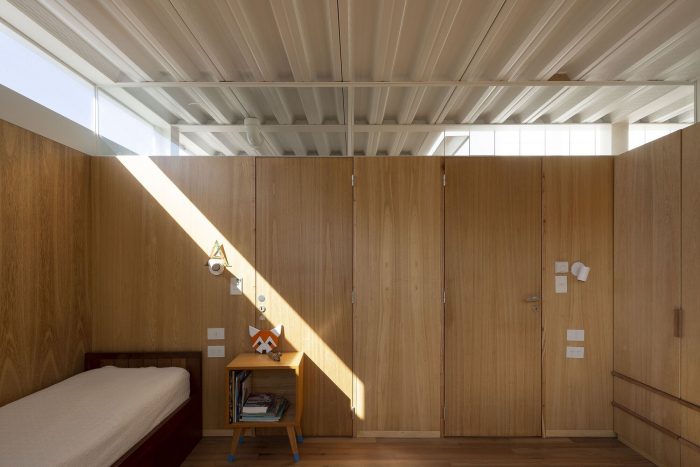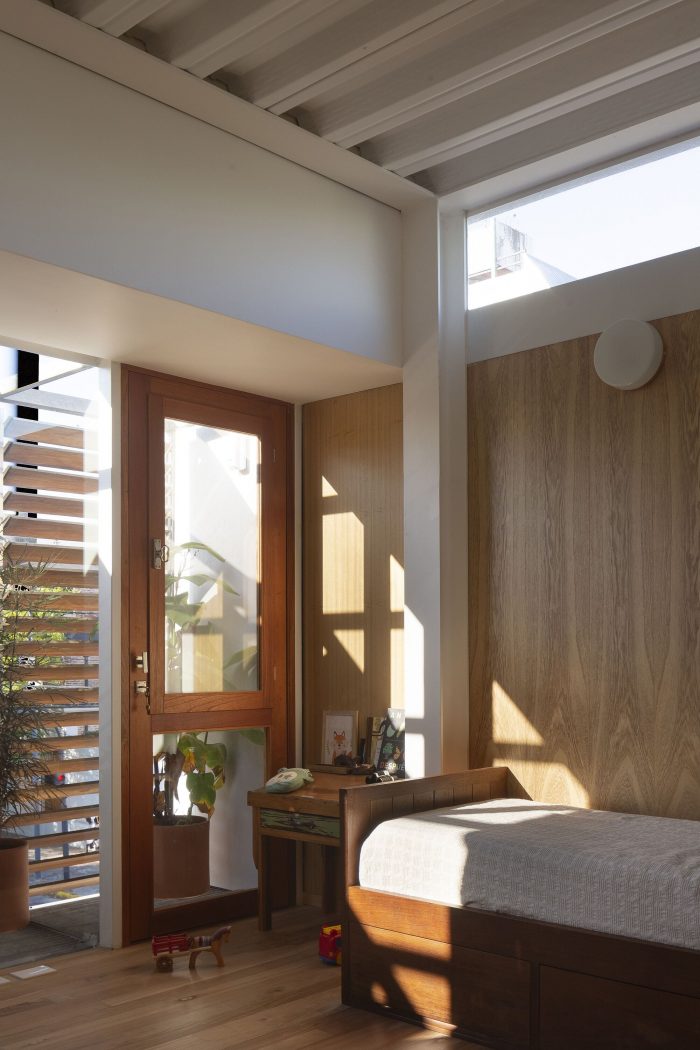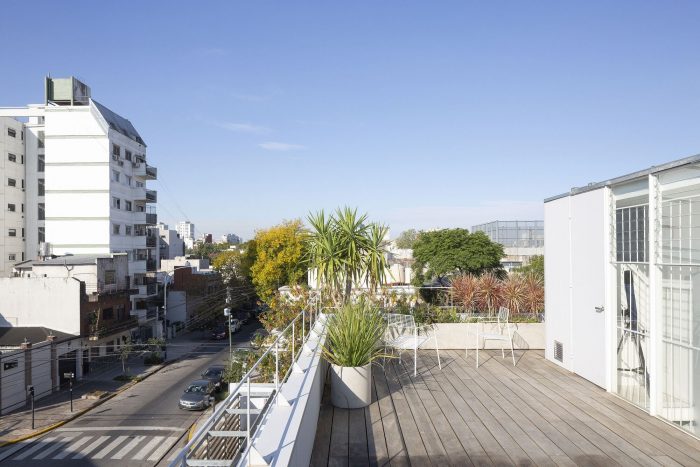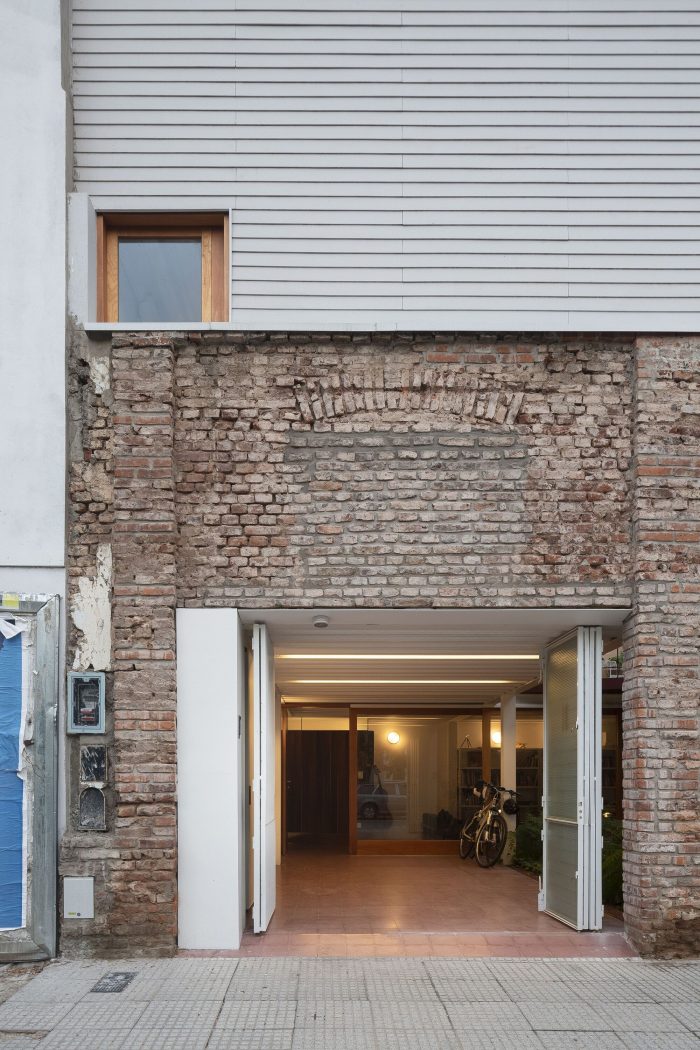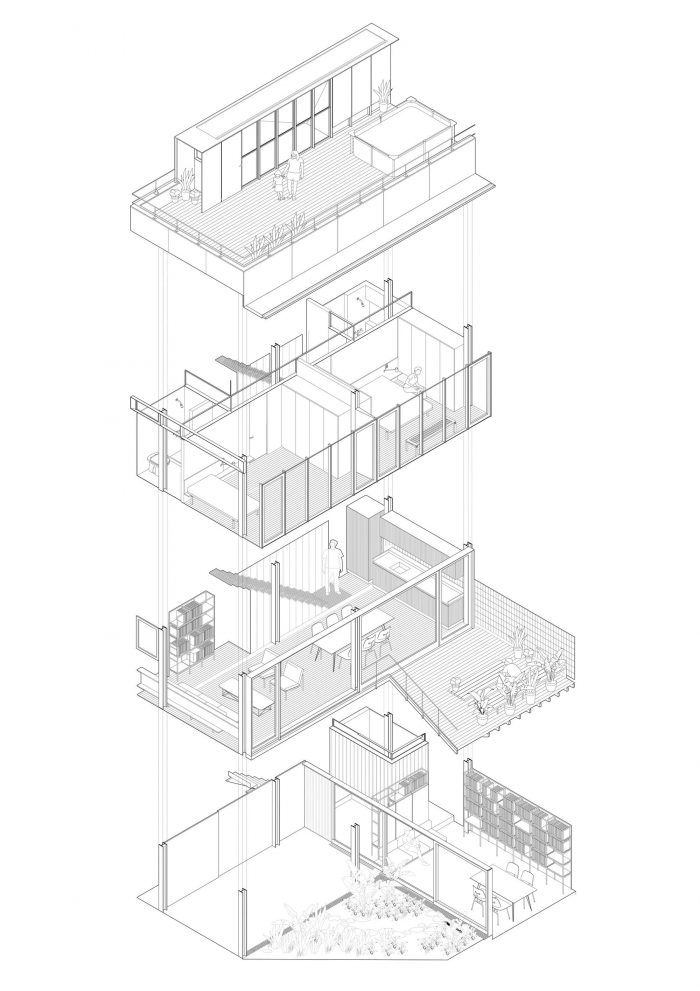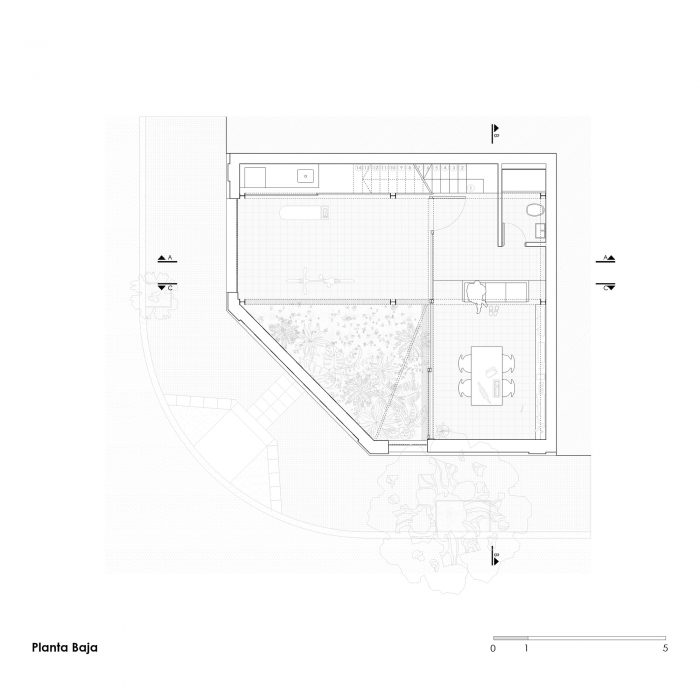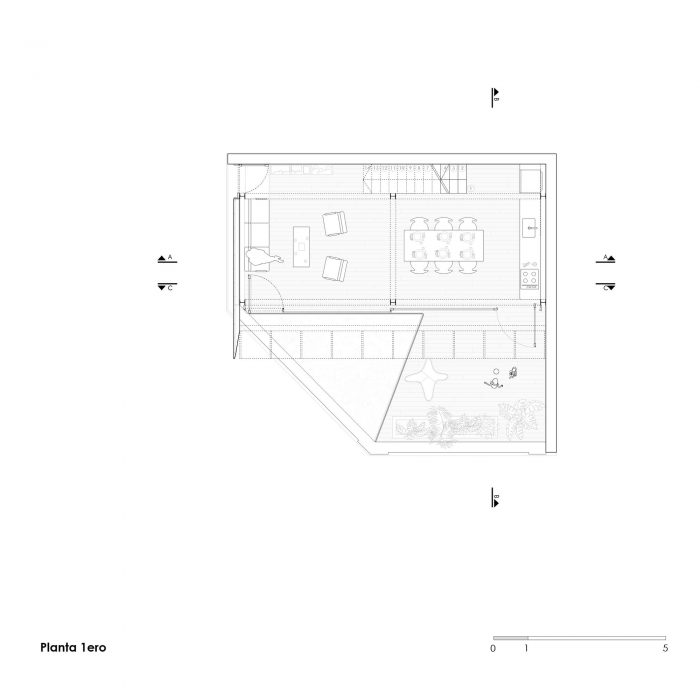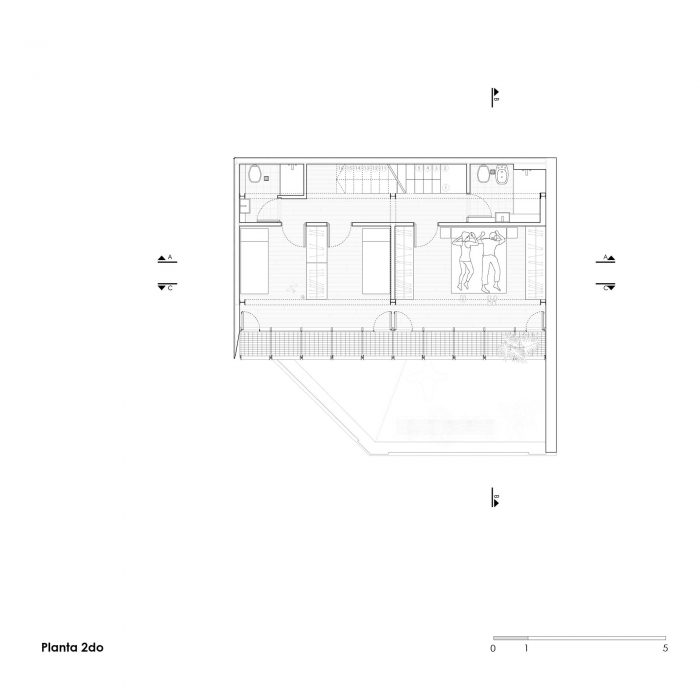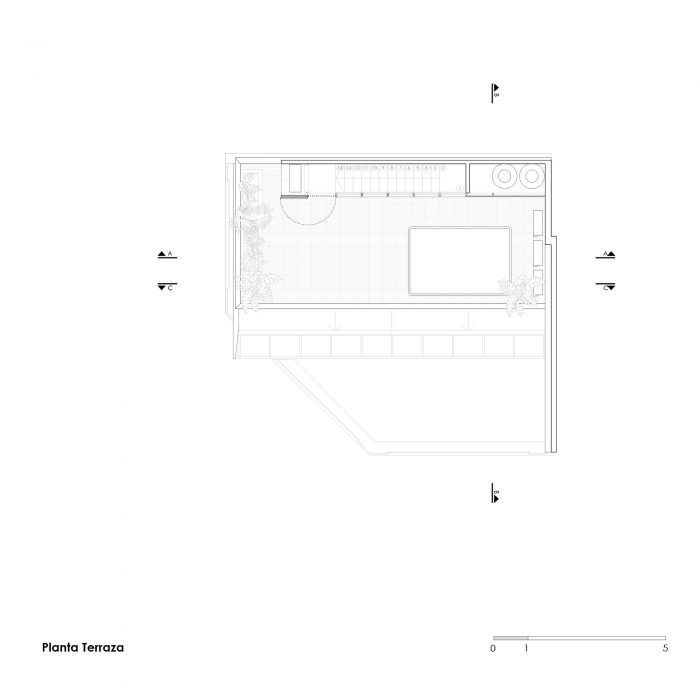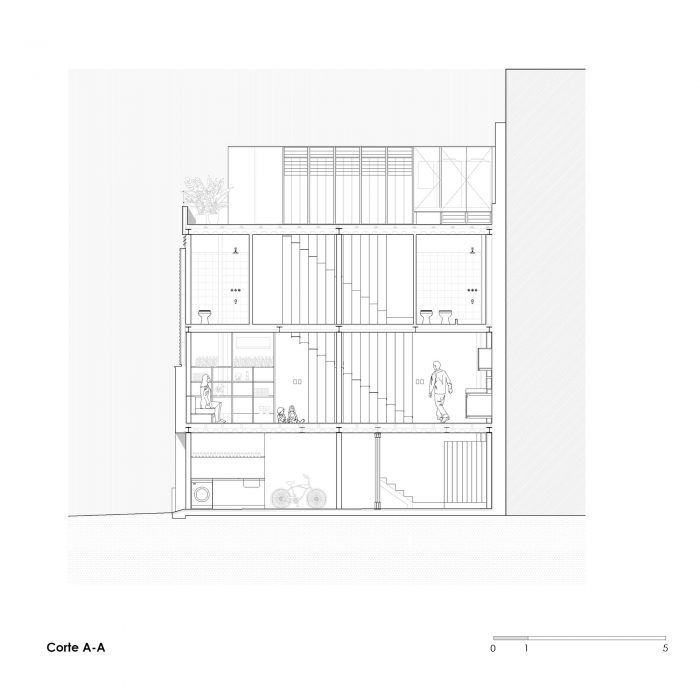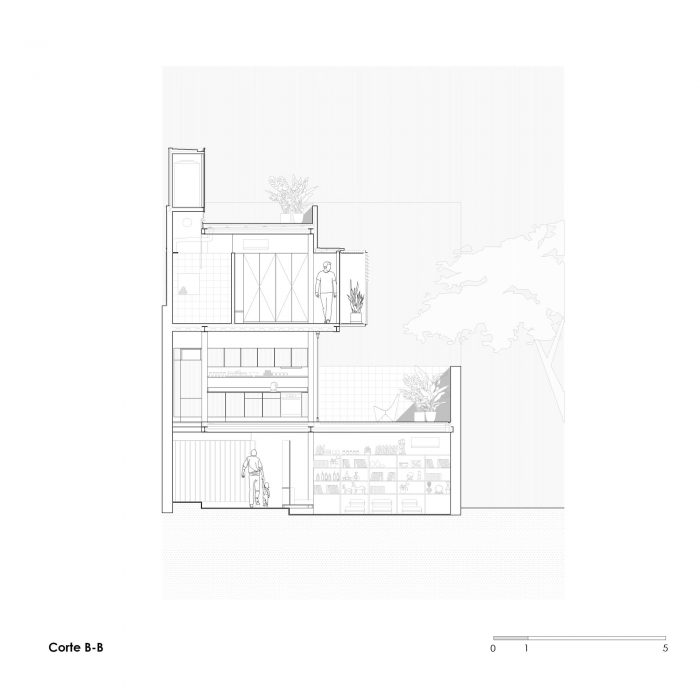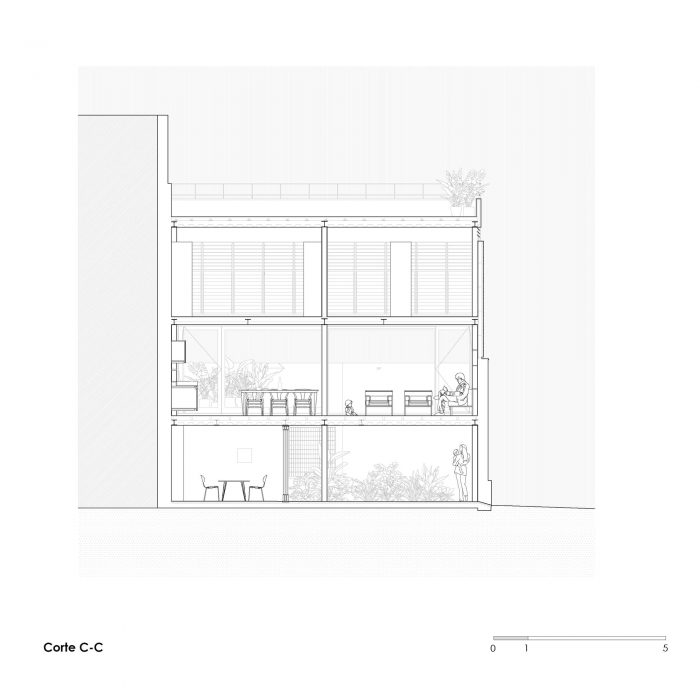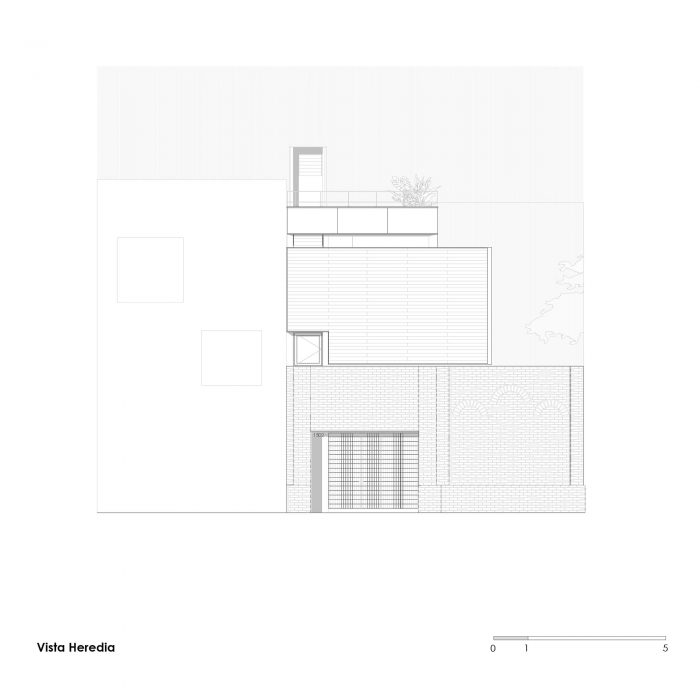布宜诺斯艾利斯市的 “Villa Ortuzar “社区的特点是一个有许多树木的低规模住宅区。
The “Villa Ortuzar” neighborhood in the city of Buenos Aires is characterized as a low-scale residential neighborhood with many trees.
居住地所在的角落多年来一直是附近小卖部的所在地。在20世纪上半叶,布宜诺斯艾利斯的许多角落作为一个聚会点,在社区内发挥着次要功能。在这种情况下–菲德尔的小亭子–。为了尊重这一遗产,以及原始建筑的规模,设计过程以恢复和重估建筑为出发点,保留其裸露的砖块外壳。
The corner where the residency is located had been for many years, the place of a neighborhood kiosk. During the first half of the 20th century, many of the corners of Buenos Aires served a secondary function within the neighborhood as a meeting point. In this case – The little Kiosk of Fidel -. In order to respect this legacy, as well as the scale of the original construction, the design process took as a starting point the recovery and revaluation of the building, leaving its exposed brick shell intact.
居住区所在的角落,多年来一直是一个邻里小卖部的地方。在20世纪上半叶,布宜诺斯艾利斯的许多角落作为一个聚会点,在社区内发挥着次要功能。在这种情况下–菲德尔的小亭子–。为了尊重这一遗产,以及原始建筑的规模,设计过程以恢复和重估建筑为出发点,保留其裸露的砖块外壳。
The corner where the residency is located had been for many years, the place of a neighborhood kiosk. During the first half of the 20th century, many of the corners of Buenos Aires served a secondary function within the neighborhood as a meeting point. In this case – The little Kiosk of Fidel -. In order to respect this legacy, as well as the scale of the original construction, the design process took as a starting point the recovery and revaluation of the building, leaving its exposed brick shell intact.
这个结构作为一个基础,为其余的围护结构元素提供了完全的自由。在一楼和二楼,大型滑动木窗提供了灵活的边界。在卧室所在的二楼,一系列的10块玻璃板作为窗户,交替使用固定和开放的窗户。
This structure serves as a base and provides total freedom for the rest of the enclosure elements. On the ground floor and first floor, large sliding wooden windows provide flexible boundaries. On the second floor, where the bedrooms are located, a series of 10 glazed panels serve as windows, alternating fixed and opening windows.
这种开放性和刚性之间的游戏引起了探索用户在家庭和私人与城市的互动之间的关系。利用旧角亭的原始高度,房子被安装在上面,从而实现了对Ortuzar别墅的自由视野,而不影响用户的隐私或对邻里身份的干扰。在功能上,它的反应是一样的:与城市有直接关系的地面层有一个更灵活的用途,允许纳入一个工作空间,而不干扰其他楼层的家庭动态。
This play between openness and rigidity gives rise to exploring the users’ relationship between the domestic and the private with the interaction with the city. Taking advantage of the original height of the old corner kiosk, the house is mounted on it, thus achieving a free view towards Villa Ortuzar without compromising the privacy of the user or the irruption of the neighborhood identity. Functionally it responds the same: The ground level, which has a direct relationship with the city, has a more flexible use, allowing the incorporation of a workspace without disturbing the family- dynamics of the other floors.
由于房子朝北,每层都有不同的解决方案:一楼有半遮盖的入口区,一楼有屋檐,二楼有遮阳板,最后是一个开放的空中露台。
As the house faces north, different resolutions are thought for each floor: semi-covered entrance areas on the ground floor, eaves on the first floor, and sunshades on the second floor, ending with an open sky terrace.
各个楼层之间存在着一种有趣的关系;通过对露台、阳台和半遮盖物的不同机制,对整个建筑的空间理解从未丢失。用户总是有其余楼层的视觉参考,从而实现了一种更积极的生活方式:建筑并没有退居二线,而是让用户参与并挑战与它的互动。
There is a playful relationship between the floors; with different mechanisms used with the terraces, balconies, and half-coverings, the spatial understanding of the building as a whole is never lost. The user always has a visual reference of the rest of the floors, thus achieving a more active type of living: the architecture does not take a back seat, but involves and challenges the user to interact with it.
作为点睛之笔,位于房屋人行道上的一棵大白蜡树一年四季提供了不同的颜色和视觉效果。
As a finishing touch, a large ash tree located on the sidewalk of the house provides varied colors and visuals throughout the year.
在构思这所房子时,建筑方面的挑战始终是在不失去邻里角落的历史价值的前提下,实现现代和整体的建筑。在设计过程中,重点是在安全和开放、传统和现代、社区和隐私之间找到一个共同点。
The architectural challenge in conceiving this house was always to achieve a modern and integral construction without losing the historical value of the neighborhood corner. In the design process, the focus was on finding a common ground between security and openness, legacy and modernity, community and privacy.
这个共同点就是建筑,它将家庭和邻里的动态交织在一起,而不带走城市的特征。
This common ground is the architecture, which intertwines family and neighborhood dynamics without taking away the identity of the city.
Architects: Estudio Damero, Griselda Balian
Area : 1507 ft²
Year : 2021
Photographs :Javier Agustín Rojas
Manufacturers : Alcor, Hierros Parrotta, Quadri
Estudio Damero : Javier Bossi, Mariano Medina
Collaborators : Julia Jabkowski
Electrical Installation : Emmanuel Antonio Bardelas
Thermomechanical Installation : JAS instalaciones
Smithy : PH estructuras
Landscaping : Puro Paisajismo
Program : Vivienda unifamiliar
City : Villa Ortúzar
Country : Argentina

